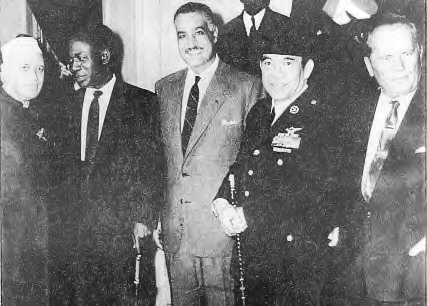 Nonalignment had its origins in India's colonial experience and the nonviolent Indian independence struggle led by the Congress, which left India determined to be the master of its fate in an international system dominated politically by Cold War alliances and economically by Western capitalism and Soviet communism. The principles of nonalignment, as articulated by Nehru and his successors, were preservation of India's freedom of action internationally through refusal to align India with any bloc or alliance, particularly those led by the United States or the Soviet Union; nonviolence and international cooperation as a means of settling international disputes. Nonalignment was a consistent feature of Indian foreign policy by the late 1940s and enjoyed strong, almost unquestioning support among the Indian elite.
Nonalignment had its origins in India's colonial experience and the nonviolent Indian independence struggle led by the Congress, which left India determined to be the master of its fate in an international system dominated politically by Cold War alliances and economically by Western capitalism and Soviet communism. The principles of nonalignment, as articulated by Nehru and his successors, were preservation of India's freedom of action internationally through refusal to align India with any bloc or alliance, particularly those led by the United States or the Soviet Union; nonviolence and international cooperation as a means of settling international disputes. Nonalignment was a consistent feature of Indian foreign policy by the late 1940s and enjoyed strong, almost unquestioning support among the Indian elite.
Unlike NATO or the UN the structure of the NAM was non-hierarchal, hinting at an inherent form of equality. None of the countries are considered superior to the others because of special privileges, such as veto power. Additionally, the organization has no outlining constitution. This was done out of necessity, as the founders of the multinational organization realized that forcing the movement into an administrative structure would lead to dissent and the eventual collapse of the organization. All of this was decided at the Jakarta Conference, during which the nations present also decided upon 5 principles of conduct:
- mutual respect for each other's territorial integrity and sovereignty
- mutual non aggression
- mutual non-interference in domestic affairs
- equality and mutual benefit
- peaceful co-existence.
